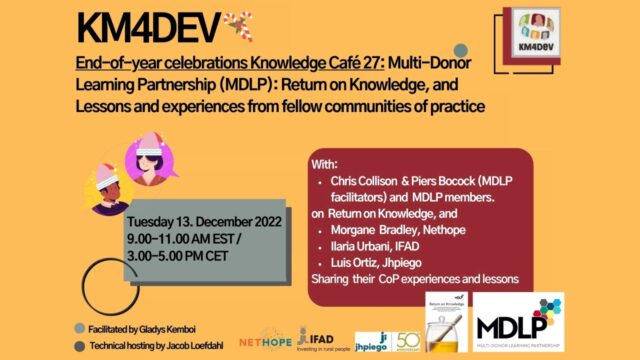
Mindset shift: transforming digital learning hurdles into knowledge management opportunities
As someone who designs and teaches online courses, the constantly changing world of digital learning brings both exciting opportunities and tough challenges. Creating interesting and useful digital content needs careful planning, including setting goals for learning, designing how users interact with the content, and making sure learners have a good experience. However, based on experience, there has been several issues ranging from time constraints and resource limitations to competency gaps in using technology tools. Researchers have been developing authoring tools1 to help educators design their own educational content based on their teaching styles and preferences. Nevertheless, findings still showed that there is a gap between tools availability and their actual use in training.
From the lens of an instructional designer, it is paramount to create informative content that is adaptive to various learning needs. On the other hand, the challenge of an educator lies in delivering digital experiences that resonate with learners, ensuring relevance, engagement, and alignment with their diverse needs.
Implementing KM in digital learning
The idea of knowledge management (KM) could provide a strategic framework for instructional designers and educators to gather best practices, share insights, and disseminate successful learning strategies. But the challenge lies in engaging this teaching community2 to be actively involved and interested in using the available technology and authoring tools. By documenting and organising both tacit and explicit knowledge related to content creation, technology integration, and its pedagogical approaches, the whole process will enhance efficiency and innovation in the digital learning environment. However, the hurdles that impede the sustainability of KM is primarily due to the perception of digital learning from both the educator and learner. According to Gkrimpizi, the common barriers found3 are the lack of digital literacy, resistance to change and risk aversion, a lack of adequate IT infrastructure and budgetary constraints.
Over the course of my 25 years of observations across different organisation, there is a noticeable gap in the sustainability of KM arising from the two group of individuals in perceiving digital learning. These underlying issues can serve as invaluable insights for reviewing various processes and as reference points for developing KM strategies.

From an educator’s standpoint
1. Content creation is time consuming
There are several challenges in developing a basic online course. Numerous factors must be carefully considered, from the structure of learning materials, defined learning objectives, the depth of topic coverage, accessibility of content resources, to the selection of imagery and graphics. With the proficiency in various authoring tools, educators often find it time-consuming to transform their original teaching materials into an online format. The consideration of the learner’s learning experience, particularly the visual and user experience/interface (UX/UI) aspects in the course design, tends to be overlooked.
Even with the help of a multimedia developer, the storyboard of the course needs to be addressed and in-sync with the learning objectives. It may take up long hours to develop one out of many modules and such process can be daunting to most educators.
2. Limited budget for resources
Creating a well-designed online course can expensive due to the development process and the involvement of specialised professionals. In certain business settings, training initiatives might seem financially unfeasible, and investing in course development may be unsound. Consequently, organisations often resort to in-house DIY solutions where most content developers are usually untrained, resulting in online courses that often look amateurish.
3. Competency of content developer
To master an authoring tool like Adobe Captivate or Articulate Storyline is a steep learning journey. There are possibly a few educators that might possess the skillset, or the time (and patience) required for this task. Many would rather opt for familiar tools like using PowerPoint and Word documents. Fortunately, over the years, there has been many free online tools to provide educators with a more accessible means of content development tools. The recent introduction of Generative AI tools is a good example for educators to potentially streamline their content creation process. However, it is important to note that there is a learning curve to overcome as well as their motivation to tackle that still remains a key factor. Unfortunately, learning in such a way is often scattered, coming from various sources and retrieving past knowledge can be challenging most of the time.

From a learner’s standpoint
1. Waste of time
It is common to experience an online course that seems like a complete time waster due to lack of relevance to job responsibilities or content familiarity. These courses are often poorly designed, resembling little more than a deck of glorified PowerPoint slides. As one processes through each slide, it is likely to reach the quiz section that bring the learning to a closure. Such negative encounters can contribute to the perception that all online learning is a pointless and time-consuming experience.
2. Expense versus investment in training
In certain organisations, training is often viewed merely as an expense rather than an investment. It is often seen as a productivity drain when staff is enrolled in training courses. Therefore, the adoption of online courses is perceived as an ideal and cost-effective solution from the management standpoint. It enables employees to progress at their own pace and according to their individual schedules. However, learner’s frustration may arise from the challenge of balancing work, training, and personal life if they are expected to complete the courses amidst a busy schedule without dedicated time.
Course completion is often driven by the need for accountability and justification of the organisation’s key performance indicators (KPIs). This leads to instances where the full content may not be comprehended by the learner, and the aim is simply to attempt and move on.
3. Technical issues
While technology has significantly facilitated our daily life, it has influenced on how we learn. As almost everyone possesses a smartphone, information becomes easily accessible with just a few clicks. However, transformative technologies are prone to security threats, in other words, they are vulnerable to cyberattacks. To address this issue, numerous security measures are introduced such as the creation and remembrance of complex passwords (alphanumeric with a symbol) that tends to be easily forgotten and to retrieve them can be cumbersome. Although solutions like single sign-on exist, their adoption is not universal due to associated costs.
Holistic approach to KM
These insights provide a glimpse into the prevailing trends and there is a considerable wealth of tacit knowledge that has remained untapped over the years. This is probably one of the reasons why digital learning has not experienced significant evolution in the past decades. The insights emphasise the importance of reshaping the individual perspective of digital learning.
KM strategy can be implemented from two angles – top-down and bottom-up perspectives. A top-down approach involves leadership and management leading the KM initiative by defining the organisation vision, mission, and objectives. This approach can also ensure organisational alignment, allocation of resource including both technology and people, and a supportive culture for knowledge sharing. On the other hand, a bottom-up approach involves empowering individual to contribute to KM by sharing their tacit and explicit knowledge. This approach can be more responsive, depending on the specific needs within the organisation.
In conclusion, a successful KM implementation requires a collaborative effort, where leadership provides the overarching framework and support, while individuals actively participate in knowledge sharing activities through various sharing platform such as communities of practice, conferences, fireside chat, and organisation SharePoint. This holistic approach tends to be more adaptable to the needs and dynamics of the organisation. It will help to promote a learning organisation through knowledge exchange.
The increasing embrace of online learning by the digital generation highlights the importance for educators to remain cognizant of the intricacies involved in content and course development. Our lecturer Rajesh Dhillon suggests that organisations must take a proactive approach by integrating new and advanced technologies such as artificial intelligence (AI), natural language processing (NLP), and mobile learning (ML) into the KM processes. This can enhance knowledge discovery and streamlining taxonomy tasks, enabling data-driven decision-making. Additionally, he advocates for a focused effort on measuring the impact of KM strategies through evaluating digital learning outcomes, improving user experience (UX), and assessing the overall effectiveness of knowledge sharing initiatives. Overall, Rajesh highlights the essential need for an innovative and technologically approach to KM in the ever-changing landscape of digital learning.
Article source: Adapted from Mindset Shift: Transforming Digital Learning Hurdles into Knowledge Management Opportunities, prepared as part of the requirements for completion of course KM6304 Knowledge Management Strategies and Policies in the Nanyang Technological University Singapore Master of Science in Knowledge Management (KM).
Header image source: Miguel Á. Padriñán on Pexels.
References:
- Roldán-Álvarez, D., Martín, E., García-Herranz, M., & Haya, P. A. (2016). Mind the gap: Impact on learnability of user interface design of authoring tools for teachers. International Journal of Human-Computer Studies, 94, 18-34. ↩
- Gouillart, F., & Billings, D. (2013, April). Community-Powered Problem Solving. Harvard Business Review. ↩
- Gkrimpizi, T., Peristeras, V., & Magnisalis, I. (2023). Classification of barriers to digital transformation in higher education institutions: Systematic literature review. Education Sciences, 13(7), 746. ↩







